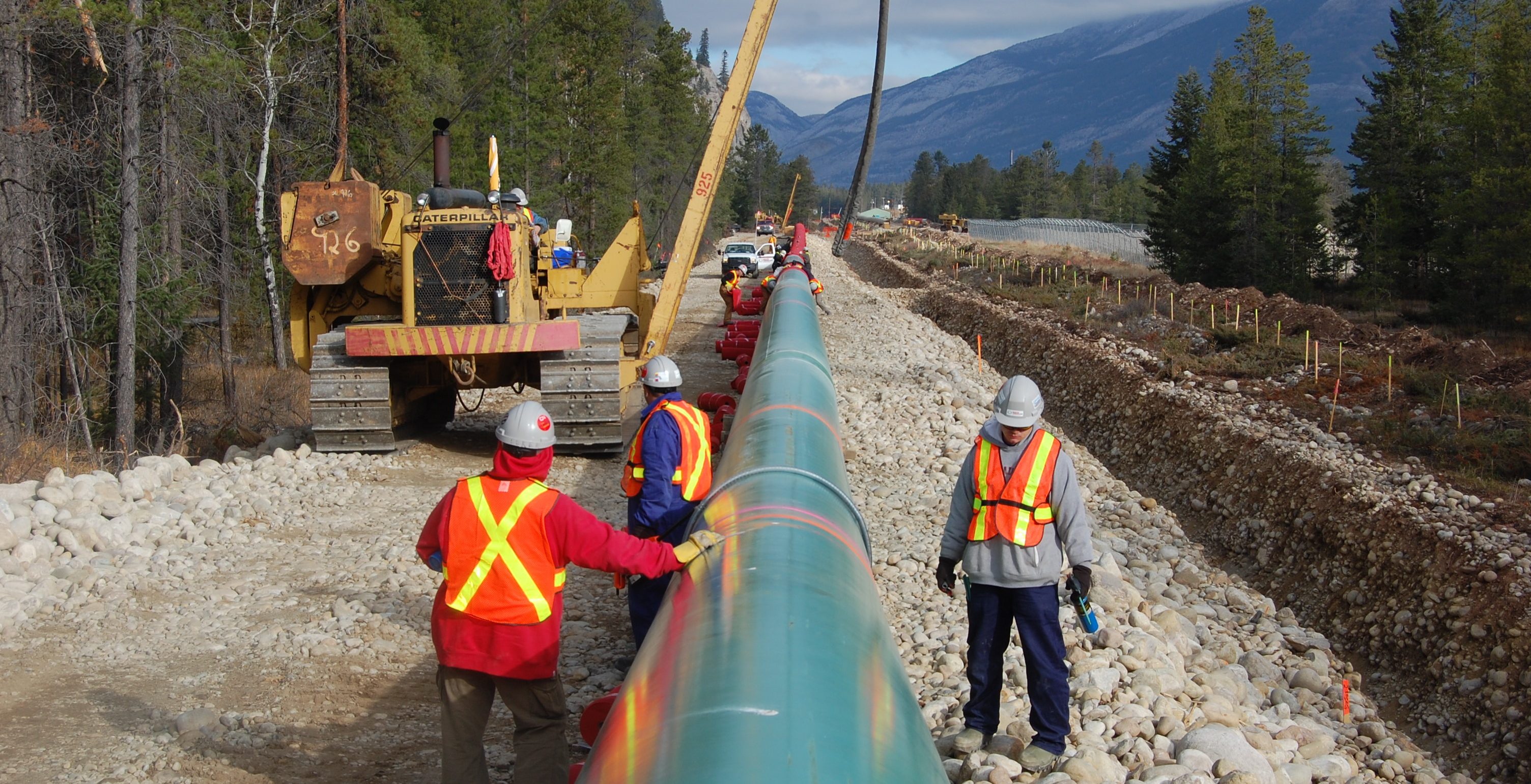
The real consequence of a shortage of Canadian pipelines may be the impact on investor confidence, and that value may never be known. Trans Mountain photo.
Pipelines are running near capacity as output grows
By Kevin Birn
A sense of optimism is slowly creeping back into the oil market. Sustained OPEC restraint, coupled with strong global oil demand growth, supported a rally that has since corrected itself, but nonetheless saw international oil prices top $US70 per barrel.
In Canada, however, optimism has been more muted. The price of oil in Western Canada tracks global and U.S. benchmarks, but is lower because of transportation costs and, for heavy oil, quality. Two-thirds of Canadian supply is heavy sour crude oil.
When crude oil is able to get to market by pipeline, the price for Western Canada heavy crude oil should range between $US14 to $16 below West Texas Intermediate (WTI). However, late in 2017, the difference in price started to expand — a lot.
Since December, the price of western Canadian heavy crude oil has traded, on average, over $US25 below WTI. Although the difference has improved recently, at times the price difference exceeded $US30 — half the value of WTI.
Through lower prices since 2014, western Canadian supply continued to expand. From 2014 to 2017, western Canadian supply grew nearly 400,000 barrels per day, with an additional 400,000 barrels per day expected this year. This has put greater pressure on existing pipelines.
With pipelines running near capacity, the spill and subsequent unplanned outage of the existing Keystone export pipeline late in 2017 caused production to back up into inventories in Western Canada. As inventory levels rose, prices began to fall as producers sought out buyers for trapped production.
Railroads were called upon to help move crude oil to market, but it was reported the rail industry was constrained in its ability to respond rapidly due to prior and existing commitments, including a backlog of grain.
The result: Canadian heavy crude oil has become trapped in Western Canada and its value reduced. The railroads will respond, but it will take time, and it will take money. As rail movements ramp up, Canadian crude’s price discount should narrow toward the cost of shipping a barrel by a dedicated crude train to $US17 to $19 compared to WTI.
But the discount could be greater, depending on the rates ultimately negotiated by the railroads. This is certainly better than the current situation, but is worse than what was obtained over the first 10 months of 2017, when the spread to WTI averaged just over $US10 due to strong heavy oil fundamentals globally.
Three pipeline projects are continuing to advance. The replacement of Enbridge’s Line 3 has the potential to be the first to the finish line late in 2019. However, Line 3 may be insufficient on its own to pull all the volumes back onto pipe. For that to happen, it may come down to the timing of Kinder Morgan’s Trans Mountain pipeline expansion and Trans Canada’s Keystone XL.
None of these are yet done deals, as exemplified by the province of B.C.’s decision to re-review pipeline safety.
The impact: The value and benefit of Canadian crude oil exports are being eroded. Certainly, there are producers that have locked in transportation capacity and may be obtaining better prices than the advertised spot price. However, looking at the volume of heavy crude exports (this includes deducting domestic crude consumption), the difference in the price that would have been obtained if adequate pipeline capacity existed points to a significant loss in value to Canada.
In just over two months — December to the first week in February — Canada may have lost, on average, about $24 million Cdn per day, with the cumulative loss over this period being well over $1 billion Cdn.
This loss effects everyone, as it reflects not only corporate revenues, but also royalties and federal and provincial taxes. The real consequence may be the impact on investor confidence, and that value may never be known.
Kevin Birn is the executive director at IHS Markit and a fellow at the Canadian Global Affairs Institute.
This article was published by the Calgary Herald on Feb. 15, 2018.


Be the first to comment